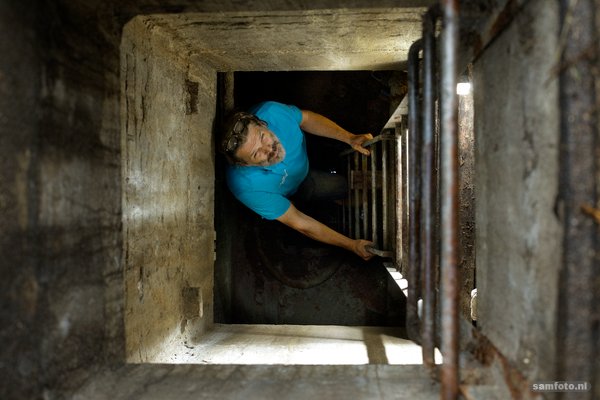Going underground
In the over seven kilometres of tunnels beneath the TU Delft campus you will find heating pipes, cables and – once a year – an inspector. Delft Outlook was invited to join him.
An underground expedition. We liked the sound of that. To access the mysterious tunnel system, we turn to Anne Medema, Energy Team project manager at TU Delfts’ Combined Heat and Power Plant.
Before going deep underground, Medema shows us around the power station; the start of our journey. The massive building, built in 1952, houses three large boilers and two cogeneration units that provide heat and power. The boilers generate about 50,000 MWh of thermal heat per year, which is pumped through many pipes to all the buildings on the campus. “Those pipes run through the heat shaft, or tunnels as you call them,” says Medema.
This heat shaft is already 65 years old but is still in good condition. “The heat grid has changed a lot,” says Medema. “First coal, then fuel oil and finally gas-fired boilers.” The campus’ heat grid is currently being made suitable for more sustainable sources, so that heat can be transferred to the buildings at lower temperatures.
After our tour of the plant, management technician Benno Bajema takes us on an expedition. He inspects the tunnels every year. Slightly apprehensive, we look on as Bajema removes the manhole cover. Glancing over the edge we can see scarily steep steps ending in a puddle of murky water. After the valuable advice to ‘be careful’, we lower ourselves somewhat awkwardly into the 5m-deep manhole. Medema stays above ground, “to make sure no one slides the cover back,” he winked.
The boilers generate about 50,000 MWh of thermal heat per year, which is pumped through many pipes to all the buildings on the campus
Armed with a torch, we carefully shuffle along behind each other. Every few metres, Bajema points out the things he checks. “Is the emergency lighting working, are the pipes still intact, that sort of thing.”
With autumn approaching we notice that the tunnel is pleasantly warm. “My predecessor told me that homeless people used to sleep here because it was warm,” says Bajema. “But since the manhole covers have been fitted with alarms, they can’t do that anymore.”
Fortunately, except for a few spiders, we don’t encounter any other residents during our expedition. After more than half an hour in the dark our trip comes to an end and we climb up the iron steps. While our eyes get used to the daylight, Medema and Bajema put the manhole cover back in place. “Is everyone here?”
